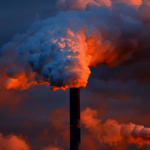Fundamentals Remain Constructive – Uncertainty Causing Volatility
2 Min. Read Time

Carbon markets, EUAs in particular, are experiencing high volatility this week. A combination of factors is contributing to some participants stepping to the sideline while technical levels were triggered. Our view is that the market is oversold here. Ultimately, we believe that uncertainty is the main driver of this week’s price action and not a fundamentally driven market move. Towards the end of today’s futures trading session, buyers entered the markets. For those who missed much of the earlier rally, there is potentially an opportunity to enter this market at November 2021 levels. Carbon markets have always been volatile and this week highlights this.
What happened?
EUA prices fell 16% on March 1st as participants reduced positions amid concerns around geopolitical risks and the potential that the EU ETS may not be a political priority for the EU. The EUA futures dropped below €70, giving up the gains of 2022 and breaking technical support levels on the busiest trading day the market has ever seen. Technical traders and option hedging also added to the selling pressure.
Uncertainty?
The fundamentals remain constructive. There is no sign of the EU soft-pedaling on its climate policy. High natural gas prices, Russia’s chief export to Europe, should be constructive for carbon allowance prices as they push industry back to higher emission coal. Note that natural gas continues to flow today. Moreover, the regulatory framework of the market has not changed. Analysts still see a tight market on an annual basis, and there is still a robust 2030 climate target to drive long-term investment. It is also important to note that carbon allowance prices have not been--contrary to a common misconception--materially responsible for higher energy prices in Europe.
However, recent uncertainty arises from a number of “maybes.” The EU shifting focus to geopolitical concerns could push climate action into a secondary priority position. Perhaps in maintaining European solidarity, some states that do not support the EU ETS (Poland, Greece) may have more leverage to push for less tightening. Another cause for uncertainty is whether the potential for reduced natural gas supply might NOT create more NET emissions via coal use. Germany and others may take drastic steps to curb high emission industry in order to build and maintain natural gas inventory. For example, Europe may pull back on metals and fertilizer production (heavy gas users) to preserve supplies. Europe is also extending plans to maintain coal-fired plants (bullish carbon) and nuclear power production (bearish carbon). The market is still trying to weigh the net balance of such plans. Another cause for broad uncertainty is whether these controls and higher energy prices could lower broader economic activity, which itself will reduce emissions.
Ultimately, a lot of new information is still being digested. At the same time, technical trading has exacerbated the recent sell-off. We will continue to monitor the markets and provide updates on new developments. However, we reiterate our view that this sell-off does not appear to be based on a fundamental change but rather on uncertainty. This could create opportunities for investors.










